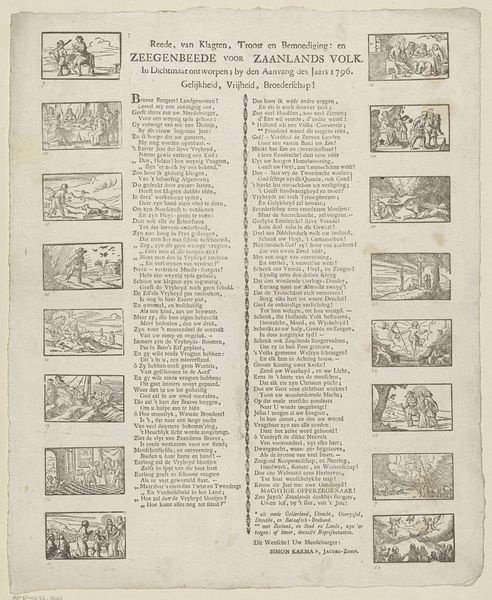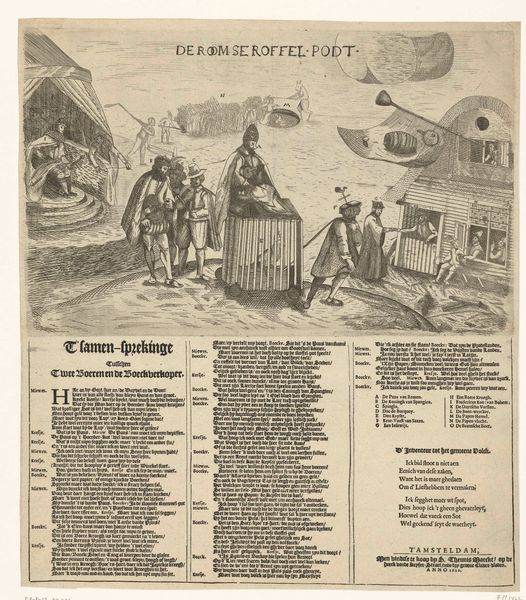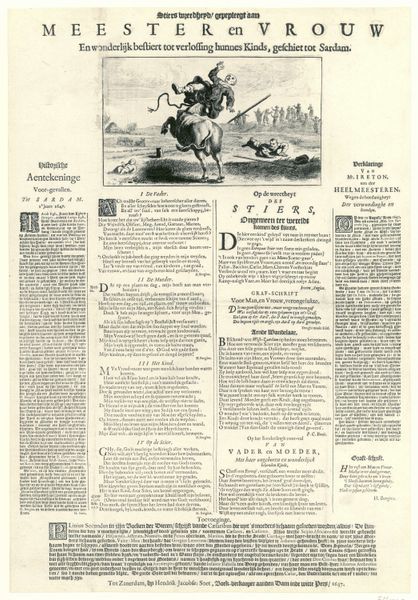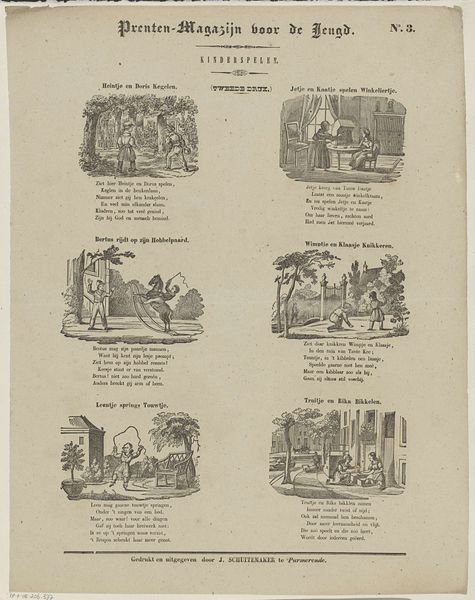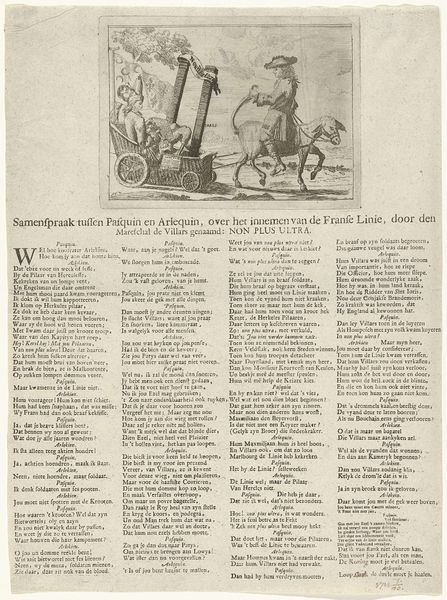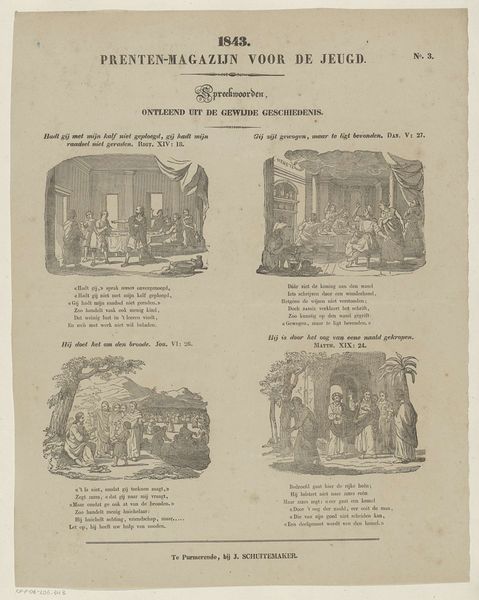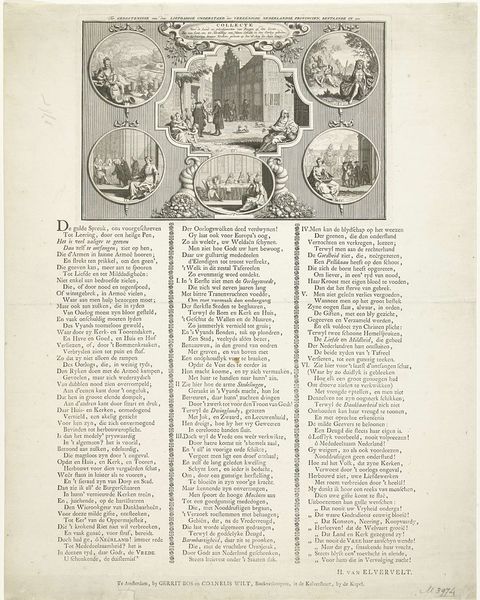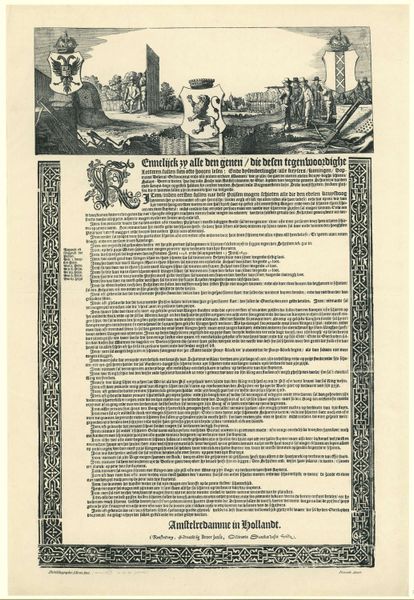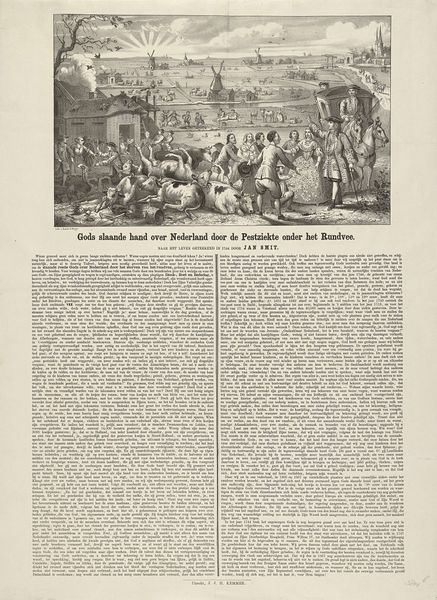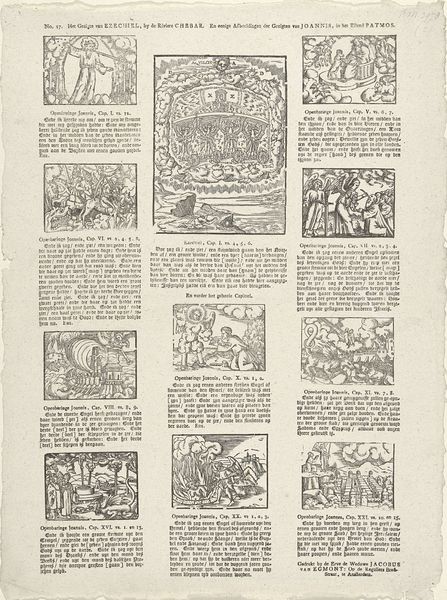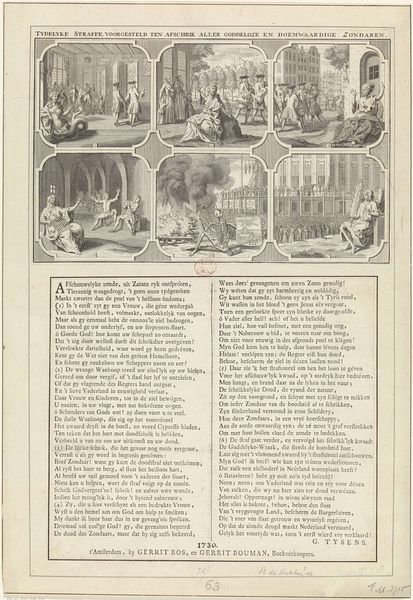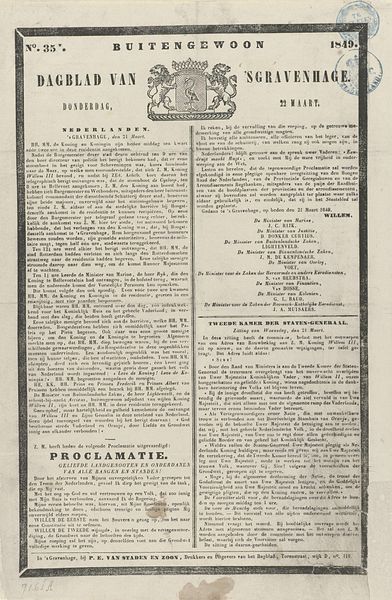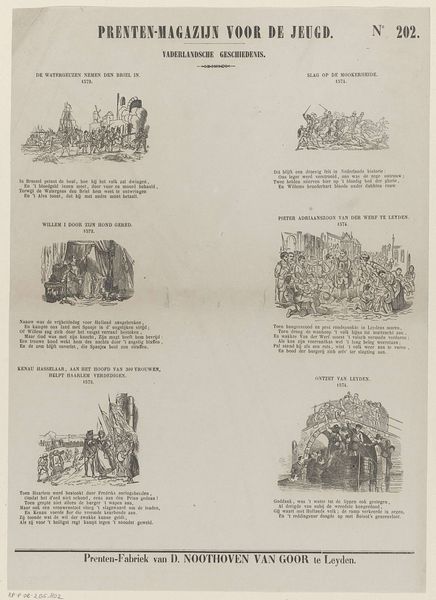
Allegorie op de Franse aanval op de Republiek en de verheffing van Willem IV tot stadhouder, 1747 1747
0:00
0:00
print, engraving
#
allegory
#
baroque
# print
#
history-painting
#
engraving
Dimensions: height 479 mm, width 330 mm
Copyright: Rijks Museum: Open Domain
Curator: This is a fascinating piece, an allegorical print created anonymously in 1747. It's titled "Allegorie op de Franse aanval op de Republiek en de verheffing van Willem IV tot stadhouder, 1747," and you can see it here at the Rijksmuseum. Editor: It feels like stepping into a fever dream, honestly. There's a mermaid, a flying owl with a letter, a very regal-looking lion... it's chaotic and unsettling. The scale is interesting too, almost like looking into a miniature world filled with political symbolism I haven't decoded yet. Curator: Exactly. The artwork's composition and the deployment of so many iconographic symbols in such a compact space are the core of Baroque artistry. The piece essentially depicts the French attack on the Dutch Republic and the subsequent appointment of William IV as stadholder, hence all of the imagery. The lion you mention represents the Dutch Republic itself. Editor: Ah, the lion makes sense now. So the mermaid—or is that a siren, holding up what appears to be a theatrical mask—is she somehow representative of French deception perhaps? And is that gentleman to the right side symbolic of Dutch negotiation? Curator: Indeed. Many understand the mermaid as emblematic of maritime power—perhaps with the mask an ironic acknowledgement of disguise—whilst that other man, at least in my assessment, represents, perhaps, an Ottoman dignitary: the complex political calculus of the time involved delicate, yet important negotiations for naval agreements within the context of conflicts happening at that moment involving Europe's naval superpowers. The owl, one may deduce, bears diplomatic letters of sorts. Editor: Wow. To imagine such historical depth encoded into this small engraving is mind-blowing. The detail for an engraving feels pretty complex. What about the sword positioned up above by the central tree? The composition does feel loaded with so much storytelling on offer here... Curator: The sword? That might represent justice or even divine intervention. I sense there may also be additional symbolism in that small grouping around the centre; it has connections with this significant period within Dutch and global history... Editor: Looking at this today, it really makes me think about how even seemingly simple art can be a complex commentary on power, war, and political maneuvering, all in the artistic language specific to its era. Curator: It is more than commentary, I think; the work represents not only visual expression, but moreover, and quite crucially, documentation as well.
Comments
No comments
Be the first to comment and join the conversation on the ultimate creative platform.
